
Color spit bite and soap ground aquatints with soft ground and hard ground etching and drypoint.
39¾ x 22¾"; 52¾ x 33¾". 65.
Crown Point Press and Renée Bott.
$185,000 fair market value Unavailable

Color spit bite and soap ground aquatints with soft ground and hard ground etching and drypoint.
39¾ x 22¾"; 52¾ x 33¾". 65.
Crown Point Press and Renée Bott.
$185,000 fair market value Unavailable

Aquatint reversal with scraping, burnishing and drypoint.
24 x 18"; 34 x 26½". 15.
Crown Point Press and Renée Bott.
$6,500 InquireInquire
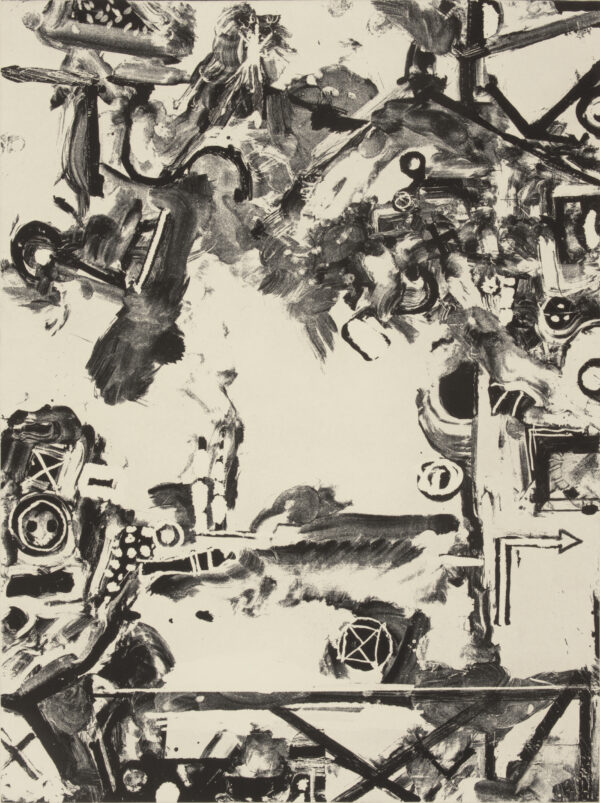
Aquatint reversal with scraping, burnishing and drypoint.
24 x 18"; 34 x 26½". 15.
Crown Point Press and Renée Bott.
$6,500 InquireInquire
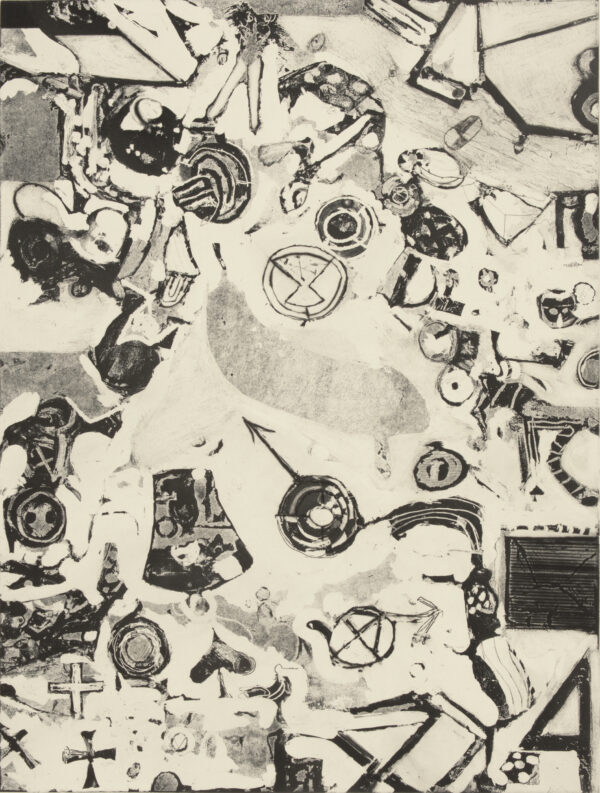
Aquatint reversal with scraping, burnishing and drypoint.
24 x 18"; 34 x 26½". 85.
Crown Point Press and Renée Bott.
$6,500 InquireInquire

Color aquatint with spit bite aquatint, soft ground etching and drypoint.
24 x 16"; 35¾ x 26½". 85.
Crown Point Press and Renée Bott.
$50,000 fair market value Unavailable

Soft ground and hard ground etching with drypoint.
13 x 9"; 21 x 16". 35.
Crown Point Press and Renée Bott.
$4,000 fair market value Unavailable

Soft ground and hard ground etching with drypoint.
18 x 13"; 27 x 21". 35.
Crown Point Press and Renée Bott.
$5,500 fair market value Unavailable

Soft ground etching.
8 1/2 x 6 1/2"; 14 1/2 x 15 1/2". 15.
Crown Point Press and Renée Bott.
$5,000 fair market value Unavailable

Drypoint.
8½ x 6½"; 16½ x 13½". 15.
Crown Point Press and Renée Bott.
$4,000 fair market value Unavailable

Aquatint with sugar lift aquatint and flat bite etching.
6½ x 8½"; 14½ x 15½". 25.
Crown Point Press and Renée Bott.
$3,000 fair market value Unavailable
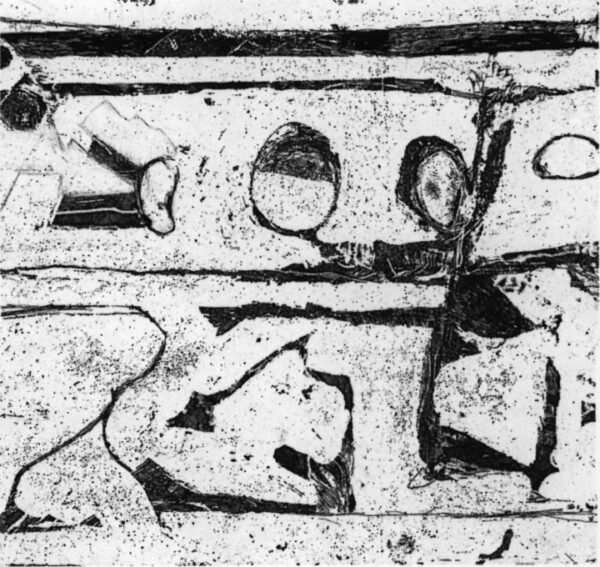
Aquatint reversal with drypoint.
6½ x 6¾"; 13½ x 12¾". 25.
Crown Point Press and Renée Bott.
$3,000 fair market value Unavailable

Aquatint reversal with hard ground etching and drypoint printed in black and blue.
20½ x 12¼"; 29½ x 20¼". 35.
Crown Point Press and Renée Bott.
$6,500 fair market value Unavailable

Aquatint.
14¼ x 12¼"; 23¼ x 20". 25.
Crown Point Press and Renée Bott.
$5,000 fair market value Unavailable

Sugar lift aquatint with soft ground etching and aquatint.
8½ x 6½"; 16½ x 13½". 35.
Crown Point Press and Renée Bott.
$4,000 fair market value Unavailable

Soft ground etching.
8 x 6"; 17¼ x 13". 25.
Crown Point Press and Renée Bott.
$4,000 fair market value Unavailable

Color woodcut.
33½ x 23"; 37½ x 25½". 200.
Crown Point Press and Tadashi Toda at Shi-un-do Print Shop, Kyoto.
$45,000 fair market value Unavailable

Woodcut.
21¾ x 15"; 23 x 17¼". 50.
Crown Point Press and Tadashi Toda at Shi-un-do Print Shop, Kyoto.
$10,000 fair market value Unavailable

A set of three color etchings.
varies; varies. 60.
Crown Point Press and Marcia Bartholme.
$60,000 fair market value Proof AvailableProof Available

Color spit bite aquatint with soap ground aquatint and drypoint.
45 x 35¼"; 53¾ x 41½". 60.
Crown Point Press and Marcia Bartholme.
$530,000 fair market value Unavailable

Color soft ground etching with spit bite aquatint and drypoint.
15¾ x 30"; 26¾ x 40¼". 60.
Crown Point Press and Marcia Bartholme.
$75,000 fair market value Unavailable

Drypoint with hard ground etching and aquatint.
7 x 5"; 19¼ x 13¼". 50.
Crown Point Press and Nancy Anello.
$4,000 fair market value Unavailable

Drypoint.
4 x 5"; 19¼ x 13¼". 50.
Crown Point Press and Nancy Anello.
$4,000 fair market value Unavailable

Color soft ground etching with aquatint.
24 x 13½"; 25¾ x 35¾". 35.
Crown Point Press and Marcia Bartholme.
$9,500 fair market value Unavailable

Color aquatint with soap ground aquatint and drypoint.
8 x 10¼"; 26 x 20". 25.
Crown Point Press and Marcia Bartholme.
$6,500 fair market value Proof AvailableProof Available

Color soap ground and spit bite aquatints with drypoint.
24 x 36"; 35¾ x 49". 50.
Crown Point Press and Marcia Bartholme.
$75,000 fair market value Unavailable

Color woodcut.
40 x 25"; 42¼ x 27". 200.
Crown Point Press and Tadashi Toda at Shi-un-do Print Shop, Kyoto.
$55,000 fair market value Unavailable

Color aquatint with hard ground etching and drypoint.
22 x 19"; 35 x 26¾". 35.
Crown Point Press and Lilah Toland.
$135,000 fair market value Unavailable

Color woodcut.
25 x 35¾"; 27½ x 38¾". 200.
Crown Point Press and Tadashi Toda at Shi-un-do Print Shop, Kyoto.
$40,000 fair market value Unavailable

Color aquatint with hard ground etching and drypoint.
20 x 19"; 33 x 26½". 35.
Crown Point Press and Lilah Toland.
$22.000 fair market value Unavailable

Aquatint with drypoint.
22 x 17"; 33½ x 27". 35.
Crown Point Press and Lilah Toland.
$6,000 fair market value Unavailable

Sugar lift aquatint with flat bite etching.
8¾ x 7"; 23½ x 18½". 50.
Crown Point Press and Lilah Toland.
$5,000 fair market value Proof AvailableProof Available

Color sugar lift aquatint with flat bite etching.
12 x 9"; 18½ x 23". 35.
Crown Point Press and Lilah Toland.
$7,000 fair market value Unavailable

Drypoint.
10¼ x 9"; 23 x 18½". 50.
Crown Point Press and Lilah Toland.
$5,000 fair market value Unavailable

Sugar lift aquatint.
16 x 14¾"; 33 x 26½". 35.
Crown Point Press and Lilah Toland.
$7,000 fair market value Proof AvailableProof Available

Color sugar lift aquatint with hard ground etching and drypoint.
9 x 10"; 26¼ x 19½". 50.
Crown Point Press and Lilah Toland.
$20,000 fair market value Proof AvailableProof Available
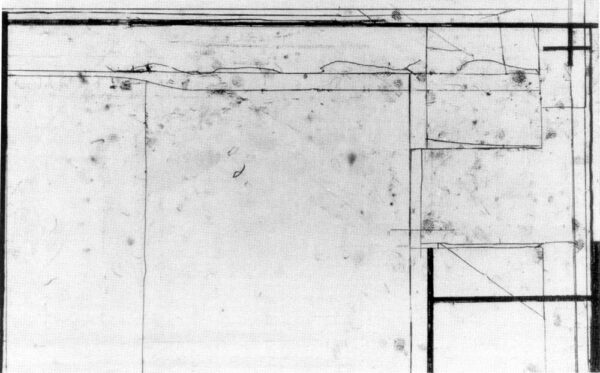
Soft ground etching with drypoint.
15 x 24"; 26½ x 40". 35.
Crown Point Press and Lilah Toland.
$7,000 fair market value Unavailable
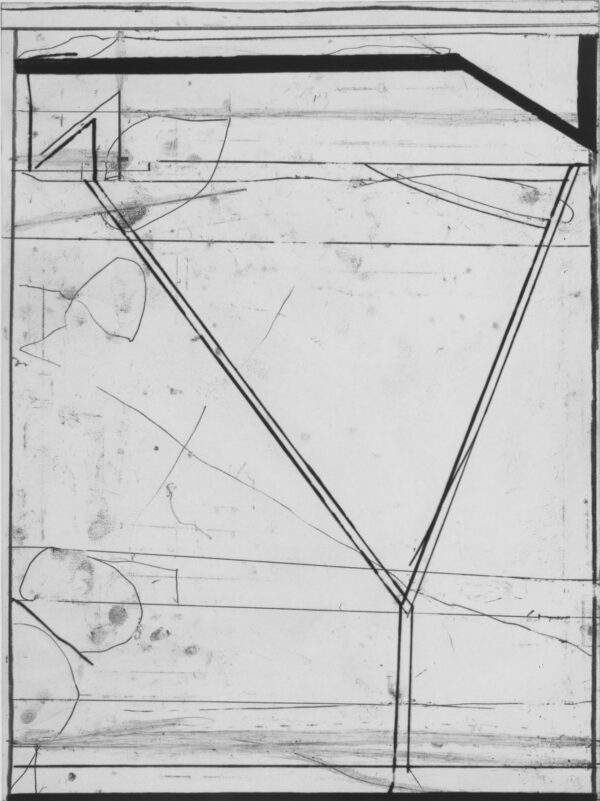
Soft ground etching with drypoint.
18 x 24"; 40 x 26½". 35.
Crown Point Press and Lilah Toland.
$7,000 fair market value Unavailable

Soft ground etching with drypoint.
18 x 24"; 26½ x 40. 35.
Crown Point Press and Lilah Toland.
$7,000 fair market value Unavailable

Soft ground etching with drypoint.
24 x 15" ; 40 x 26½". 35.
Crown Point Press and Lilah Toland.
$7,000 fair market value Proof AvailableProof Available
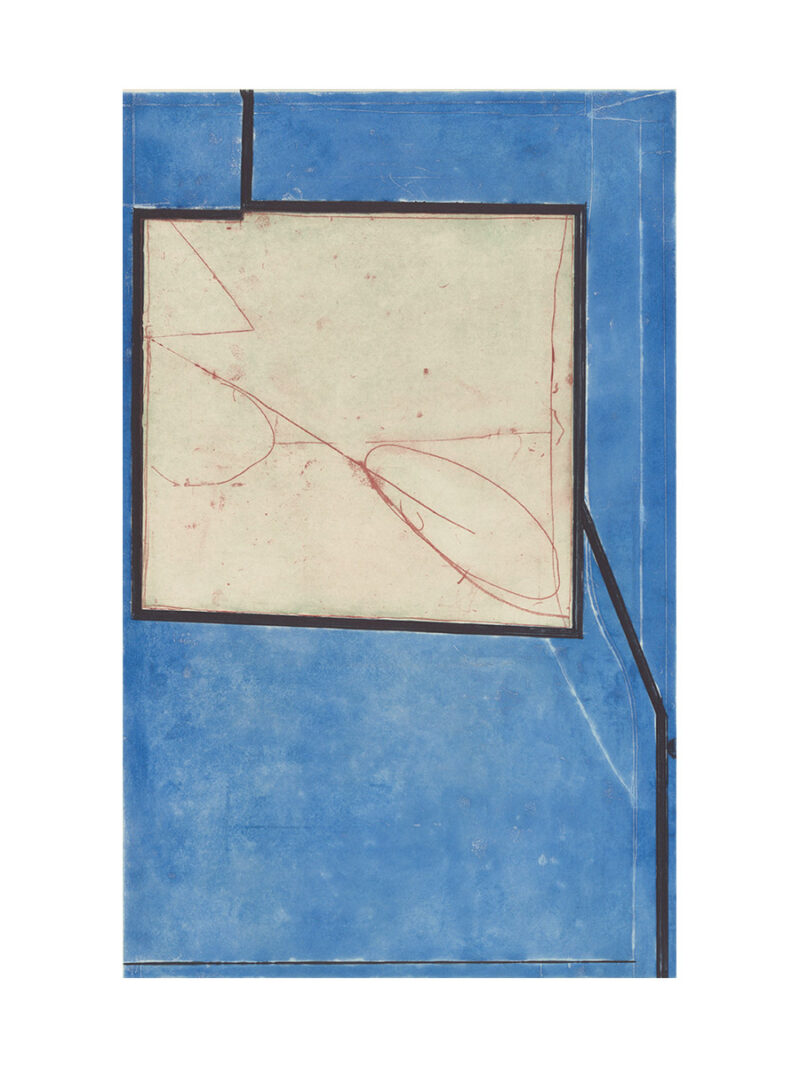
Color spit bite aquatint with soft ground etching and drypoint.
24 x 15" ; 37 x 26¾". 40.
Crown Point Press and Lilah Toland.
$22,000 fair market value Unavailable

Soft ground etching.
10 x 13½"; 22 x 30". 35.
Crown Point Press and Nancy Anello.
$6,000 fair market value Unavailable

Aquatint with hard ground etching and drypoint printed in black and brown.
13½ x 19½"; 30½ x 22". 35.
Crown Point Press and Nancy Anello.
$12,000 Unavailable

Color aquatint with soft ground etching.
18¾ x 17¾"; 37½ x 30½". 35.
Crown Point Press and Nancy Anello.
$15,000 fair market value Unavailable
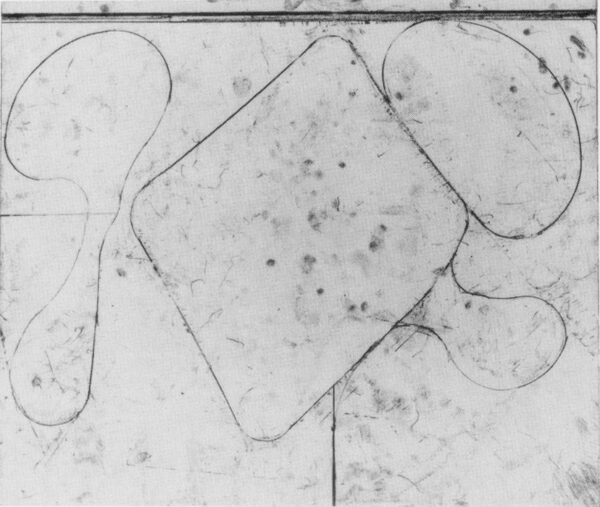
Soft ground etching.
11 x 13"; 22 x 30". 35.
Crown Point Press and Nancy Anello.
$6,000 fair market value Proof AvailableProof Available

Color spit bite aquatint with aquatint.
15½ x 13½"; 31 x 24¼". 40.
Crown Point Press and Nancy Anello.
$15,000 fair market value Unavailable

Color spit bite aquatint with aquatint and drypoint.
18 x 19"; 36½ x 30½". 35.
Crown Point Press and Nancy Anello.
$25,000 fair market value Unavailable

Color aquatint with hard ground etching and drypoint.
13½ x 9½"; 30½ x 22". 35.
Crown Point Press and Nancy Anello.
$25,000 fair market value Unavailable

Color aquatint with soft ground etching.
18¾ x 17¾"; 37½ x 30¾". 35.
Crown Point Press and Nancy Anello.
$18,500 fair market value Unavailable

Aquatint reversal with scraping, burnishing and drypoint.
18¾ x 17¾"; 37½ x 30½". 22.
Crown Point Press and Nancy Anello.
$15,000 fair market value Unavailable
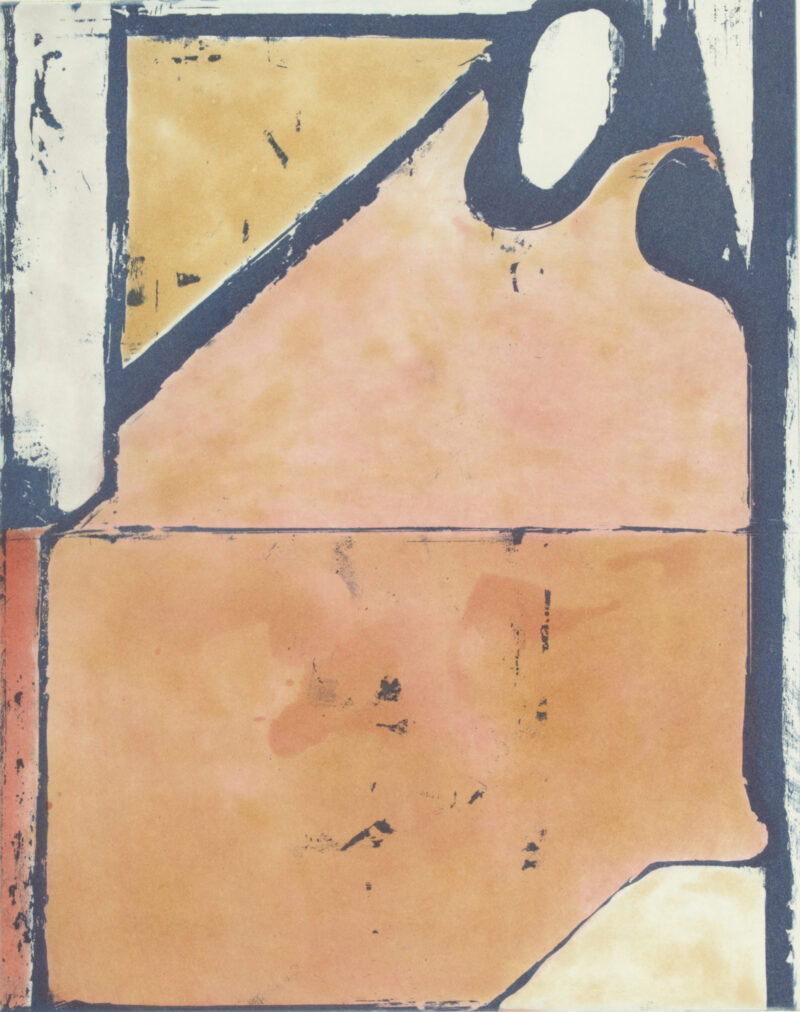
Color sugar lift and spit bite aquatints.
15 x 12"; 30 x 23". 35.
Crown Point Press and Lilah Toland.
$30,000 fair market value Unavailable

Color drypoint with hard ground etching and aquatint.
11 x 15½"; 19 x 26½". 35.
Crown Point Press and Lilah Toland.
$7,500 fair market value Unavailable

Color drypoint with aquatint.
11 x 15½"; 26 x 19". 35.
Crown Point Press and Lilah Toland.
$7,500 fair market value Unavailable

Color soft ground etching with spit bite aquatint.
11 x 9¾"; 28 x 20". 35.
Crown Point Press and Lilah Toland.
$8,500 fair market value Unavailable

Color spit bite aquatint with aquatint and soft ground etching.
24 x 14½"; 40 x 26". 35.
Crown Point Press and Lilah Toland.
$185,000 fair market value Unavailable

Color spit bite aquatint with aquatint and soft ground etching.
24 x 14½"; 40 x 26". 35.
Crown Point Press and Lilah Toland.
$160,000 fair market value Unavailable

Color spit bite aquatint with soft ground etching.
12 x 8¼"; 26½ x 19". 35.
Crown Point Press and Lilah Toland.
$20,000 fair market value Unavailable

Color soft ground etching with spit bite aquatint.
11¾ x 4"; 26 x 14". 35.
Crown Point Press and Lilah Toland.
$32,500 fair market value Proof AvailableProof Available

Portfolio of four etchings with aquatint and drypoint.
varies; 19 x 13". 35.
Crown Point Press and Lilah Toland.
$10,000 fair market value Unavailable

Aquatint with hard ground etching, drypoint and roulette.
6 x 5¾"; 19 x 13". 35.
Crown Point Press and Lilah Toland.
$3,000 each fair market value Unavailable

Hard ground etching with drypoint and roulette.
6 x 5¾"; 19 x 13". 35.
Crown Point Press and Lilah Toland.
$3,000 each fair market value Unavailable

Drypoint; from Four Small Prints, a portfolio of four etchings.
5 x 4"; 19 x 13". 35.
Crown Point Press and Lilah Toland.
$3,000 fair market value Unavailable

Drypoint with hard ground etching.
6½ x 5"; 19 x 13". 35.
Crown Point Press and Lilah Toland.
$3,000 fair market value Unavailable

Portfolio of five aquatints with drypoint.
11 x 8"; 19 x 13". 35.
Crown Point Press and Lilah Toland.
$22,000 fair market value Unavailable

Soft ground etching with drypoint.
11 x 8"; 40 x 26". 35.
Crown Point Press and Lilah Toland.
$6,000 fair market value Unavailable

Soft ground etching.
17½ x 12½"; 40 x 26". 35.
Crown Point Press and Lilah Toland.
$6,000 fair market value Unavailable

Soft ground etching.
17½ x 12½"; 40 x 26". 35.
Crown Point Press and Lilah Toland.
$6,000 fair market value Unavailable

Soft ground etching.
30 x 22"; 40 x 26". 35.
Crown Point Press and Lilah Toland.
$6,000 fair market value Unavailable

Soft ground etching.
17½ x 12½"; 40 x 26". 35.
Crown Point Press and Lilah Toland.
$6,000 fair market value Unavailable

Soft ground etching.
20 x 11"; 40 x 26". 35.
Crown Point Press and Lilah Toland.
$6,000 fair market value Unavailable

Portfolio of nine drypoint and hard ground etchings.
varies; 30 x 22". 25.
Crown Point Press and John Slivon.
$35,000 fair market value Unavailable
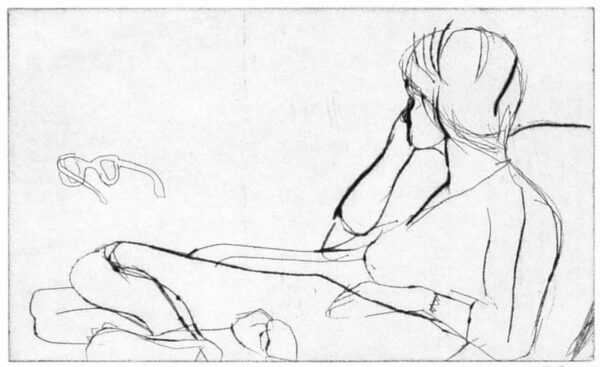
Drypoint; from 41 Etchings Drypoints.
5¾ x 9¼"; 17¾ x 14¾". 25.
Crown Point Press and Kathan Brown.
Unavailable

Hard ground etching; from 41 Etchings Drypoints.
8¼ x 9¾"; 17¾ x 14¾". 25.
Crown Point Press and Kathan Brown.
$5,500 fair market value Unavailable

Soft ground etching; from 41 Etchings Drypoints.
9¾ x 7"; 17¾ x 14¾". 25.
Crown Point Press and Kathan Brown.
Unavailable

Soft ground etching; from 41 Etchings Drypoints.
7¾ x 12¾"; 17 x 14¼". 25.
Crown Point Press and Kathan Brown.
Unavailable
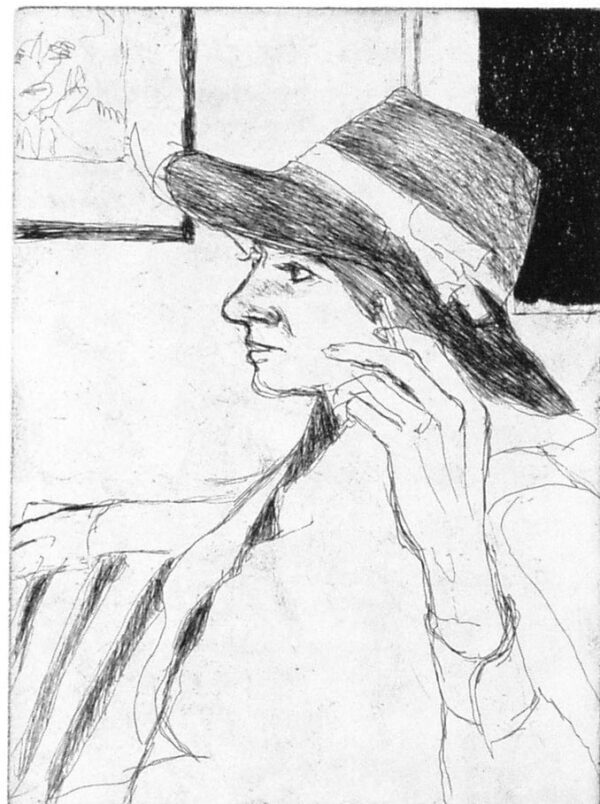
Aquatint with hard ground etching; from 41 Etchings Drypoints.
9½ x 7¾"; 17¾ x 14¾". 25.
Crown Point Press and Kathan Brown.
Unavailable

Drypoint; from 41 Etchings Drypoints.
7¾ x 5½"; 17¾ x 14¾". 25.
Crown Point Press and Kathan Brown.
Unavailable

Soft ground etching; from 41 Etchings Drypoints.
8¼ x 7¾"; 17¾ x 14¾". 25.
Crown Point Press and Kathan Brown.
Unavailable

Aquatint with soft ground etching; from 41 Etchings Drypoints.
5¾ x 8¼"; 17¾ x 14¾". 25.
Crown Point Press and Kathan Brown.
Unavailable

Hard ground etching; from 41 Etchings Drypoints.
6¾ x 7"; 17¾ x 14¾". 25.
Crown Point Press and Kathan Brown.
Unavailable

Drypoint; from 41 Etchings Drypoints,.
11 x 6¾"; 17¾ x 14¾". 25.
Crown Point Press and Kathan Brown.
Unavailable
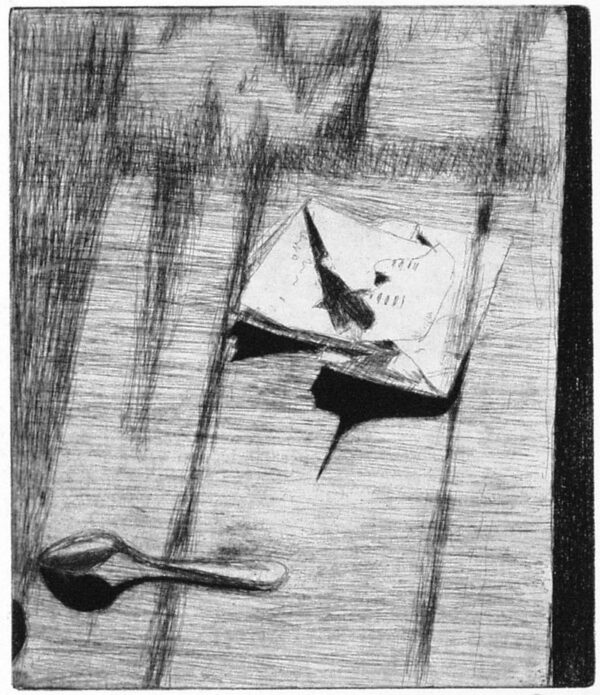
Aquatint with hard ground etching; from 41 Etchings Drypoints.
9½ x 8"; 17¾ x 14¾". 25.
Crown Point Press and Kathan Brown.
Unavailable

Drypoint; from 41 Etchings Drypoints.
11¼ x 8"; 17¾ x 14¾". 25.
Crown Point Press and Kathan Brown.
Unavailable

Drypoint; from 41 Etchings Drypoints.
11¾ x 7¼"; 17¾ X 14¾". 25.
Crown Point Press and Kathan Brown.
Unavailable

Hard ground etching with drypoint; from 41 Etchings Drypoints.
12 x 9"; 17¾ x 14¾". 25.
Crown Point Press and Kathan Brown.
Unavailable
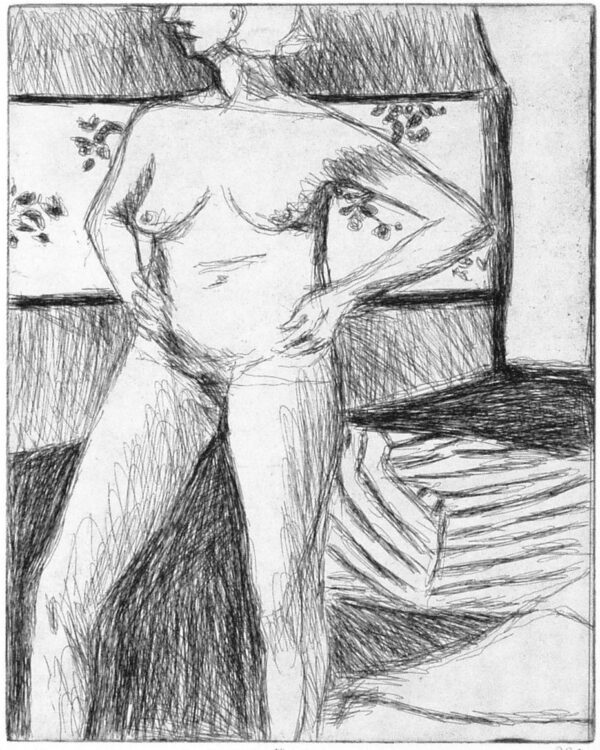
Hard ground etching; from 41 Etchings Drypoints.
12 x 9¼"; 17¾ x 14¾". 25.
Crown Point Press and Kathan Brown.
Unavailable

Drypoint; from 41 Etchings Drypoints.
13¼ x 9¾"; 17¾ x 14¾". 25.
Crown Point Press and Kathan Brown.
Unavailable

Aquatint with drypoint and hard ground etching; from 41 Etchings Drypoints.
12½ x 8¾"; 17¾ x 14¾". 25.
Crown Point Press and Kathan Brown.
Unavailable

Drypoint; from 41 Etchings Drypoints.
8 x 9½"; 17¾ x 14¾". 25.
Crown Point Press and Kathan Brown.
Unavailable
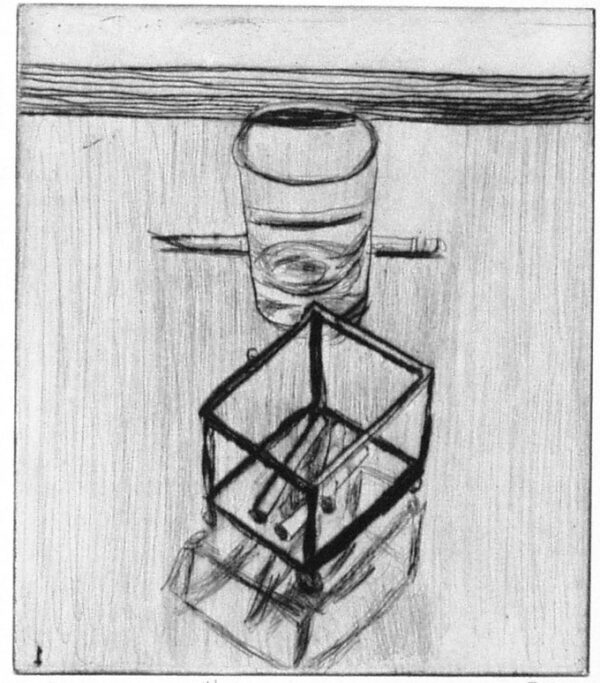
Drypoint; from 41 Etchings Drypoints.
7¾ x 6½"; 17¾ x 14¾". 25.
Crown Point Press and Kathan Brown.
Unavailable

Hard ground etching; from 41 Etchings Drypoints.
4½ x 14¾"; 17¾ x 14¾". 25.
Crown Point Press and Kathan Brown.
Unavailable

Soft ground etching; from 41 Etchings Drypoints.
8½ x 5¾"; 17¾ x 14¾". 25.
Crown Point Press and Kathan Brown.
Unavailable

Hard ground etching; from 41 Etchings Drypoints.
8 x 6"; 17¾ x 14¾". 25.
Crown Point Press and Kathan Brown.
Unavailable

Hard ground etching; from 41 Etchings Drypoints.
8¼ x 6¾"; 17¾ x 14¾". 25.
Crown Point Press and Kathan Brown.
Unavailable

Soft ground etching; from 41 Etchings Drypoints.
12¾ x 9¾"; 17¾ x 14¾". 25.
Crown Point Press and Kathan Brown.
Unavailable

Hard ground etching; from 41 Etchings Drypoints.
8¾ x 7"; 17¾ x 14¾". 25.
Crown Point Press and Kathan Brown.
Unavailable

Aquatint with drypoint and hard ground etching; from 41 Etchings Drypoints.
11 x 8½"; 17¾ x 14¾". 25.
Crown Point Press and Kathan Brown.
$5,500 Unavailable

Drypoint; from 41 Etchings Drypoints.
7½ x 12"; 17¾ x 14¾". 25.
Crown Point Press and Kathan Brown.
Unavailable

Drypoint; from 41 Etchings Drypoints.
13 x 7"; 17¾ x 14¾". 25.
Crown Point Press and Kathan Brown.
Unavailable

Drypoint with hard ground etching and scraping; from 41 Etchings Drypoints.
9¾ x 7"; 17¾ x 14¾". 25.
Crown Point Press and Kathan Brown.
Unavailable

Soft ground etching with drypoint; from 41 Etchings Drypoints.
7 x 5¾"; 17¾ x 14¾". 25.
Crown Point Press and Kathan Brown.
Unavailable
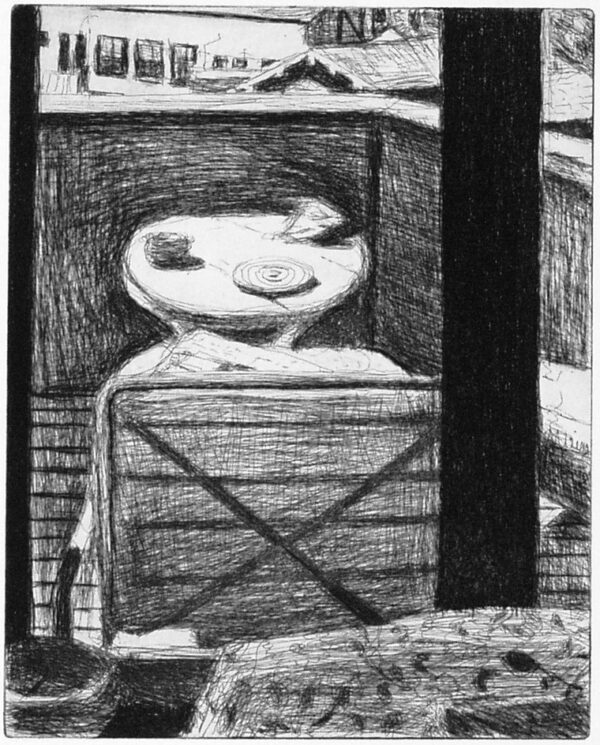
Aquatint with hard ground etching; from 41 Etchings Drypoints.
7 x 5¾"; 17¾ x 14¾". 25.
Crown Point Press and Kathan Brown.
Unavailable

Hard ground etching with drypoint; from 41 Etchings Drypoints.
7¾ x 11½"; 17¾ x 14¾". 25.
Crown Point Press and Kathan Brown.
Unavailable

Aquatint with hard ground etching and drypoint; from 41 Etchings Drypoints.
11¾ x 9¾"; 17¾ x 14¾". 25.
Crown Point Press and Kathan Brown.
$5,500 Unavailable

Hard ground etching; from 41 Etchings Drypoints.
7¾ x 6¼"; 17¾ x 14¾". 25.
Crown Point Press and Kathan Brown.
Unavailable

Hard ground etching; from 41 Etchings Drypoints.
8½ x 11"; 17¾ x 14¾". 25.
Crown Point Press and Kathan Brown.
Unavailable

Hard ground etching; from 41 Etchings Drypoints.
8½ x 11½"; 17¾ x 14¾". 25.
Crown Point Press and Kathan Brown.
Unavailable

Drypoint with hard ground etching; from 41 Etchings Drypoints.
11 x 9¾"; 17¾ x 14¾". 25.
Crown Point Press and Kathan Brown.
$5,500 Unavailable

Hard ground etching; from 41 Etchings Drypoints.
8½ x 8"; 17¾ x 14¾". 25.
Crown Point Press and Kathan Brown.
Unavailable

Drypoint; from 41 Etchings Drypoints.
13 x 9¾"; 17¾ x 14¾". 25.
Crown Point Press and Kathan Brown.
$5,500 fair market value Unavailable

Drypoint; from 41 Etchings Drypoints.
5 x 4¼"; 17¾ x 14¾". 25.
Crown Point Press and Kathan Brown.
Unavailable

Drypoint with hard ground etching; from 41 Etchings Drypoints.
7¾ x 6¼"; 17¾ x 14¾". 25.
Crown Point Press and Kathan Brown.
Unavailable


